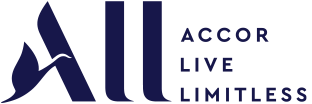About the Exhibition
Manipulating the material surfaces and sources of their imagery, the artists featured in this exhibition of recent photo-based works reveal intersections between identity, migration, trauma, and memory, bearing witness to past and present. In the context of 2020-2021, excavation, as both metaphor and process, is essential to the personal and collective healing all of these works visualize.
Cosmo Whyte and Hank Willis Thomas appropriate and obscure archival images through processes that invite active participation to decode: Whyte’s Stretch Marks and Keloids, is based on photographs of West Indian women participating in a 1940s Empire Day, which he stretches through a drawing process, scraping the surface to reveal white paper pulp beneath. The artist calls these stark abrasions keloids; a keloid is a type of scar tissue build-up caused by injury or trauma to the skin, a condition which disproportionately affects darker skin tones. The artist explains, “In an attempt to re-contextualize unintentional scarring, I reimagine keloids as a way the body documents history on the skin.” Born in Jamaica, a British colony from 1655 until 1962, the artist “explores how notions of identity are disrupted by migration,” and how personal and collected memory is embedded in the body. Race Riot (With Interference) belongs to Thomas’s body of work that uses retro-reflective screen-printing technology to obscure archival press photographs of public events that resolve only through flash photography. To the naked eye, the images appear as white-washed scenes devoid of any perceptible narrative; through the augmented gaze of the camera’s lens and flash, the images document instances of racial and social injustice.
The still-life imagery in Stephanie Syjuco’s Neutral Orchids series has been grey-washed before being captured by her camera: flowers are sprayed with industrial grey primer paint and then shot against a photographic neutral grey seamless background. “Appearing almost ashen and unreal, their living form is betrayed by the slight shades of color that have escaped being painted over,” says the artist. Syjuco chose orchids, she explains, because, “As ‘exotic’ flowers that have since been cloned ad infinitum and marketed to the public, orchids bear the weight of being at once foreign and domestic, a common decorator item that connotes elegance as well as distant tropical splendor.”
Syjuco’s multi-media practice addresses the legacies of colonialism, migration, and discrimination; her use of photographic color calibration charts—utilized by photographers to determine neutral or correct color—suggests that no hue is truly neutral, and embeds a historical critique within the creation and presentation of her still-life works.
As in Whyte’s Stretch Marks and Keloids, the body keeps score in works by Vinhay Keo, Nate Lewis, and Mohau Modisakeng, enacting or reenacting trauma, historical, inherited, lived, and imagined. Born in Cambodia, Keo immigrated to the United States in 2004 at the age of 10. Self-Purgation is a work from his series, Confront, where the artist uses shredded paper as a metaphor for the constant reporting and examination of his personal information and the bureaucratic processes to which immigrants are subject. In this image, Keo has covered himself in a white substance to suggest contamination; the image captures a moment of physical purging of white strips of paper from his mouth, a tacit rejection of historical injustices and forced assimilation in a white supremacist structure.
A self-taught artist, Nate Lewis worked as a critical care registered nurse for nearly a decade; the surgically precise patterns that embellish his subjects suggest a deep knowledge and reverence for the body, for how it is inhabited, experienced, and judged. “Treating the paper like an organism itself, I sculpt patterns akin to cellular tissue and anatomical elements,” explains the artist, “allowing hidden histories and patterns to be uncovered.” Suspended in movement and rendered in tones of black and white that extend beyond the flat plane of paper, the figures Lewis sculpts illuminate both the biology and the aesthetics of the human body.
Narrating the inheritance and transcendence of trauma, South African artist Mohau Modisakeng describes his work as cathartic: “The violence that is threaded through most of my work is deeply personal and largely symbolic. This is because black people in this country didn’t only experience violence as a physical threat, but also on a political, economic, psychological and spiritual level. My work responds to the complexities that have come from such a history.” Modisakeng examines the fraught and violent history of the United States in his multi-media project, Zion, for which he choreographed a street procession of performers through known public spaces, which historically relate to the city’s African-American communities. Eventually, the performers gather in Central Park, which from 1825 to 1855 was known as Seneca Village, a community of predominantly free Black property owners. As Manhattan expanded northward, the villagers were displaced, their land repossessed to create a space of respite and recreation for the city’s white population. Who knows what was left behind, what still lies beneath?
This exhibition was organized in conjunction with the 2021 Louisville Photo Biennial, which takes place September 9 – November 14, featuring photography exhibitions presented at cultural institutions throughout Louisville Metro, Southern Indiana, and surrounding communities. Learn more at www.louisvillephotobiennial.com.


